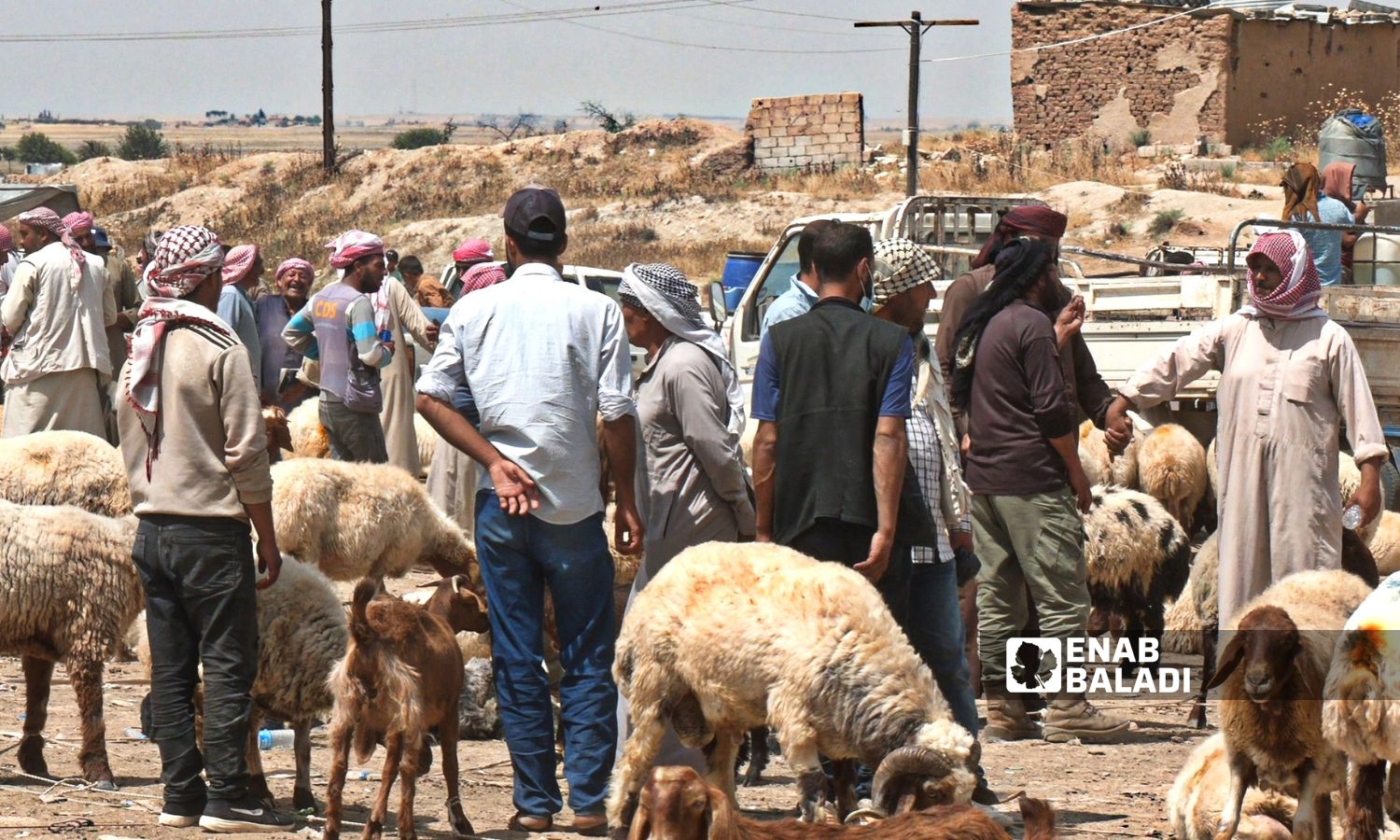



The General Authority for Land and Sea Ports announced on March 25 that the first shipment of livestock had been loaded via the Tartus port, considering this a step towards the recovery of the export sector, without specifying the quantities of the shipment.
The decision to allow livestock exports from Syria raises questions about the reasons for this move and its impact on the local market.
The Deputy Minister of Agriculture for Animal Wealth Affairs, Ayham Abdel Qader, clarified to Enab Baladi that 200,000 male Awassi sheep and male mountain goats were allowed for export, and this number is subject to increase based on the impact of exports on local prices. Additionally, the export of 20,000 heads of local live cattle has been permitted.
The total number exported by the time this news was prepared is estimated at 38,200 sheep, with 37,000 heads exported by sea via Tartus port to Saudi Arabia, and 1,200 heads exported by land to Jordan through the Nassib border crossing, according to Abdel Qader. He noted that all countries can import from Syria, but currently exports are taking place mainly to Gulf countries.
Regarding the reasons that prompted the government to allow exports, Abdel Qader explained that the export process would contribute to supporting the state treasury with foreign currency because of the fees that will be collected. Moreover, this step will help limit the smuggling phenomenon, which negatively affects the national economy and the status of livestock in Syria.
He pointed out that exports would help break the stagnation in the local market and allow breeders to export a portion of their herds, enabling them to continue breeding, especially in light of rising feed prices and limited pastures this year, in addition to the consumers’ weak purchasing power.
The Deputy Minister of Agriculture for Animal Wealth Affairs indicated that the Ministry of Agriculture does not interfere in setting a fixed price for selling sheep; instead, the price in the local market is determined by supply and demand. However, exports can be halted if prices rise significantly because of the effect this would have on the local market.
There is no mortality in sheep; veterinary teams are monitoring their health situation across the provinces and intervening in case of any disease outbreak, according to Abdel Qader.
For the sheep prepared for export, they undergo a 21-day quarantine and monitoring, with all necessary measures taken before export to ensure their departure from Syria in good health and free from infectious or epidemic diseases, according to Abdel Qader.
Amid the drought affecting Syria, feed prices have risen, exacerbating the struggles of breeders, negatively impacting them as feed is one of the essential elements of breeding.
The Director of the General Establishment for Feed, Hussein Shihab, told Enab Baladi that there was previously support for the feed quota, which has been increased by 50% per head of sheep and distributed only once.
Contracts have been made with several traders to import bran and barley to provide it in the market, due to the rise in feed prices because of drought and lack of rain, in addition to increased demand for bran, according to Shihab.
In a previous statement, the Director of the General Establishment for Feed mentioned that pelleted and crushed feed would be offered at competitive prices in the local market, setting the selling price of one ton of pelleted feed at $310 or its equivalent in Syrian pounds, while the selling price of one ton of crushed feed is at $280 or its equivalent in Syrian pounds.
The goal of this step is to liberalize feed prices, with the intention of subsequently liberating the prices of other feed materials at competitive prices in the local market, so they cover the needs of breeders and improve the status of livestock breeding in Syria.
According to a report from the Central Bank of Syria (CBS), the exchange rate of the Syrian pound against the US dollar is 12,000 Syrian pounds, while the exchange rate of the Syrian pound against the US dollar in the black market is 10,800 Syrian pounds, according to the S-P Today website.
if you think the article contain wrong information or you have additional details Send Correction